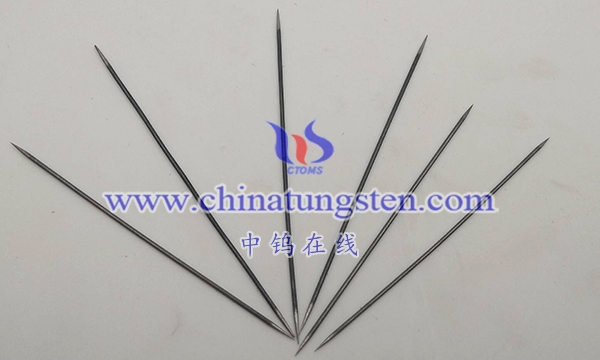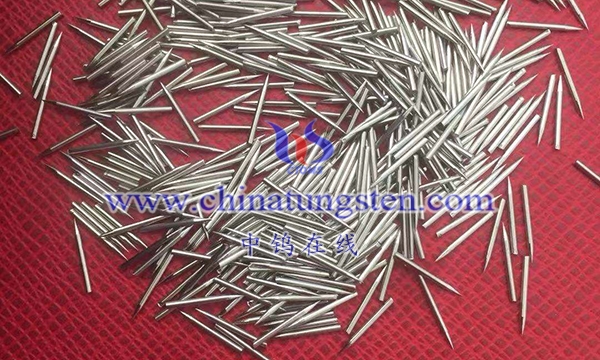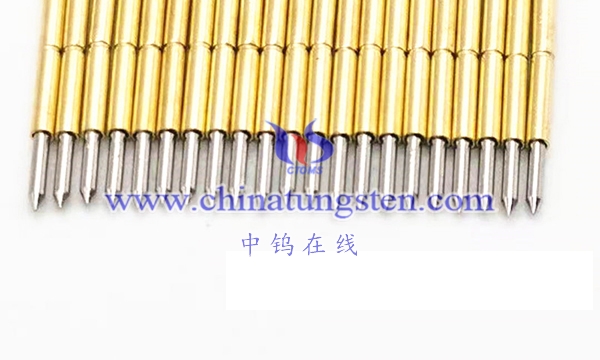Straightened tungsten wire is a specially processed metal material with high purity, high density, high strength and high hardness. It has excellent electrical conductivity and corrosion resistance. In the electronics industry, straightened tungsten wire is widely used in the manufacture of heating elements and electrodes in electronic tubes, transistors and other devices. The following will introduce in detail the process of using straightened tungsten wire to produce tungsten needles.
- Cutting materials
First, the straightening tungsten wire needs to be cut to the appropriate length according to the required length and diameter of the tungsten needle. Special cutting tools are required when cutting, such as grinding saws, laser cutting, etc., to ensure that the cutting section is smooth and burr-free.

- Polishing
The cut tungsten needle needs to be polished to remove surface defects and burrs to improve its aesthetics and performance. When grinding, you need to use a special grinding wheel or cloth wheel, and add an appropriate amount of abrasive and water to polish and grind the surface of the tungsten needle. After grinding, the tungsten needle needs to be cleaned to remove residual abrasive and impurities.
- Heat treatment
Heat treatment is an important link in the production process of tungsten needles. Through heat treatment, the internal structure of the tungsten needle can be changed, its strength and hardness can be improved, and internal stress can be eliminated. Heat treatment is generally carried out in special heat treatment equipment, and the heating temperature and time need to be controlled to ensure that the heat treatment effect meets the requirements.
- Bending and forming
Bending forming is a key step in the tungsten needle production process. By bending the tungsten needle into the required shape, the required arc and angle can be obtained. Bending molding needs to be carried out in a special bending mold, and the bending strength and angle need to be controlled to ensure that the molding effect meets the requirements.

- Surface treatment
After bending and forming, the tungsten needle needs to be surface treated to eliminate surface defects and burrs and improve its aesthetics and performance. Surface treatment methods include mechanical polishing, chemical etching, etc. During the surface treatment process, attention needs to be paid to controlling the treatment temperature and treatment time to avoid excessive stress on the tungsten needle, which may cause cracks or deformation.
- Quality inspection
After the above steps, the tungsten needle needs to be inspected for quality. The testing content includes appearance quality, dimensional accuracy, density and hardness, etc. Quality inspection is an important step to ensure that the tungsten needle meets the requirements, so the quality and accuracy requirements of each link need to be strictly controlled.

- Packaging and warehousing
Tungsten needles that pass the quality inspection need to be packaged and stored in storage for subsequent use. When packaging and warehousing, you need to pay attention to clearly labeling the specifications, models, quantities and other information of the product so that you can quickly find the required product during subsequent use.
More details of tungsten probes, please visit website: http://tungsten.com.cn/tungsten-needles-and-pins.html
Please contact CHINATUNGSTEN for inquiry and order of tungsten needles:
Email: sales@chinatungsten.com
Tel.: +86 592 5129595






